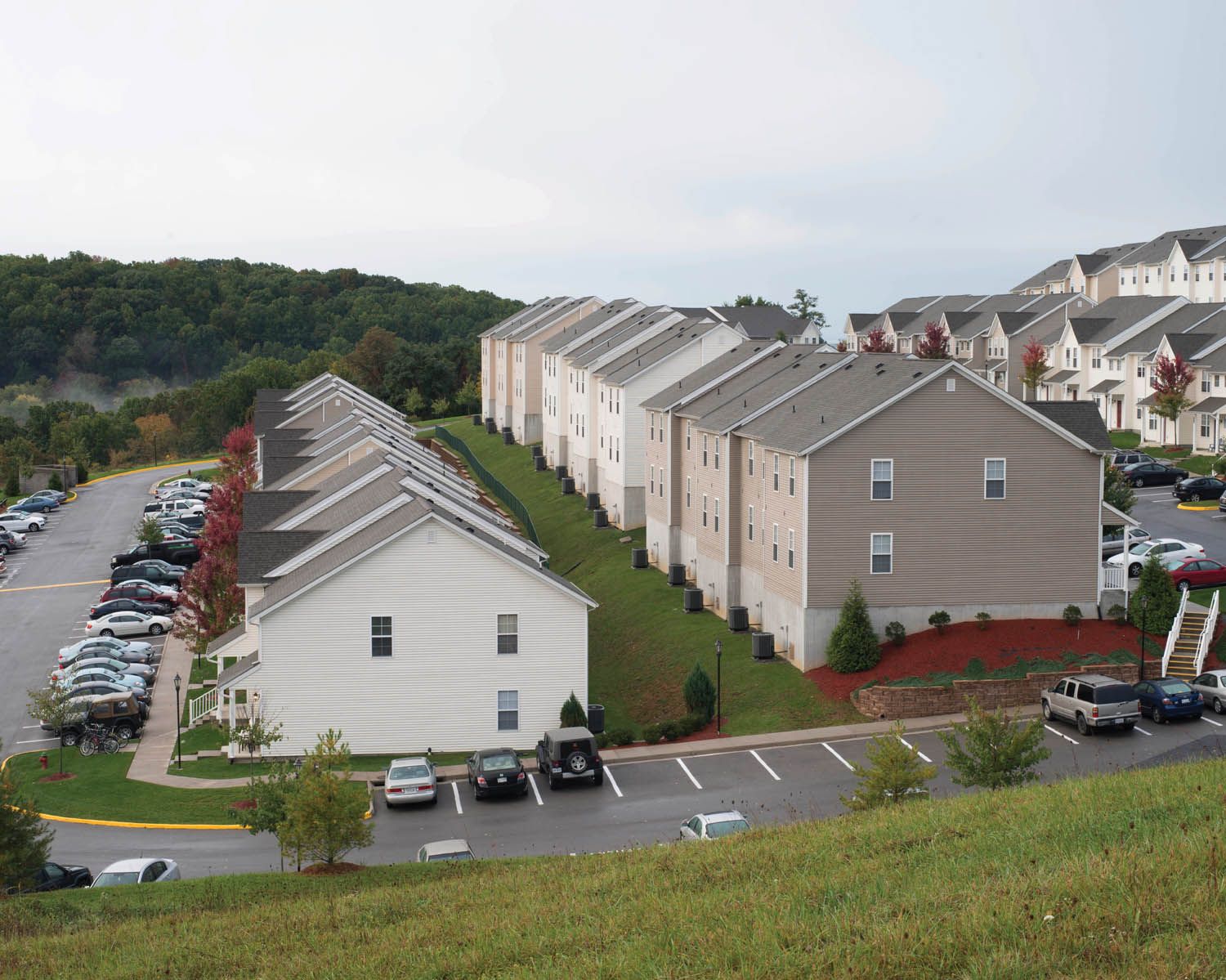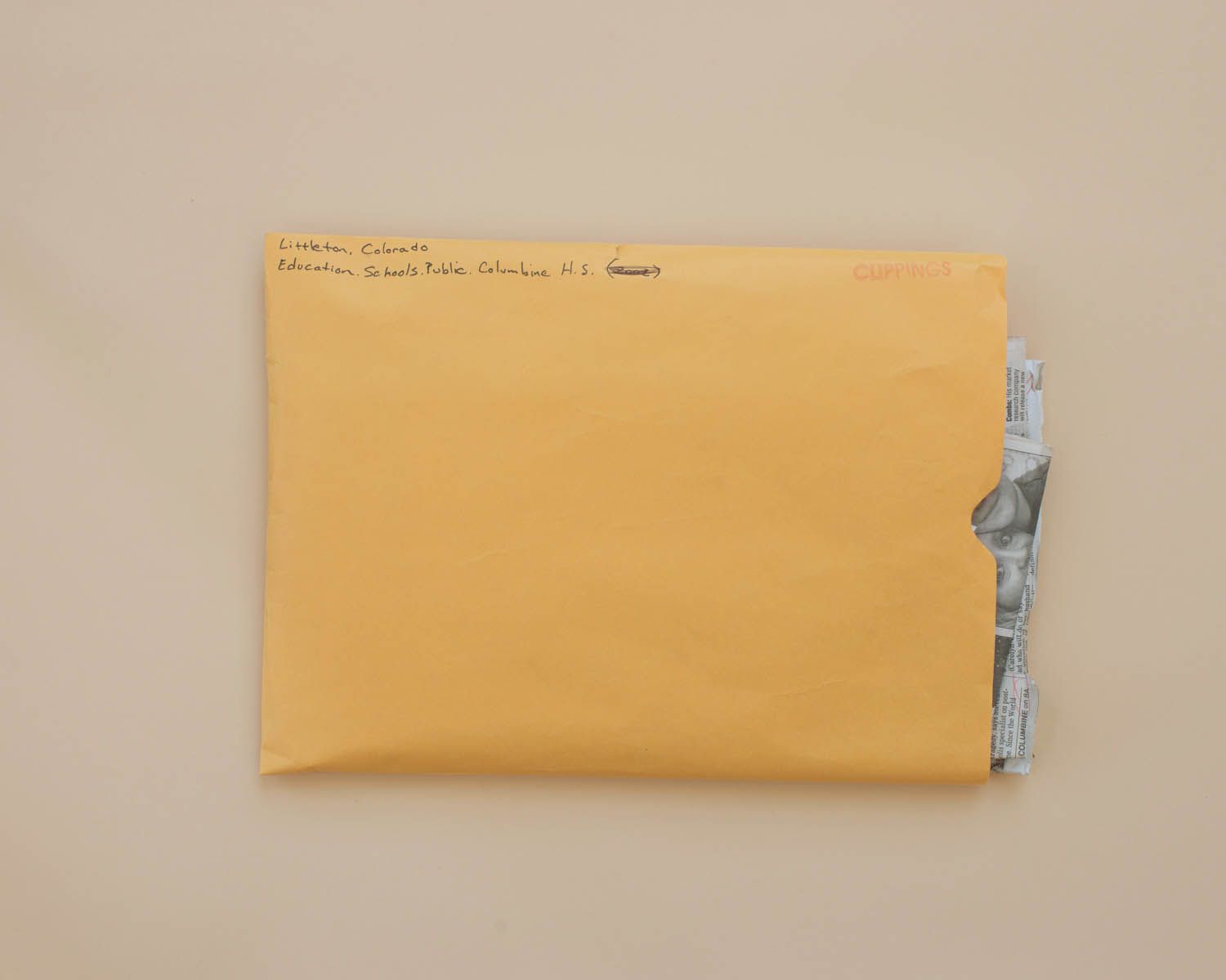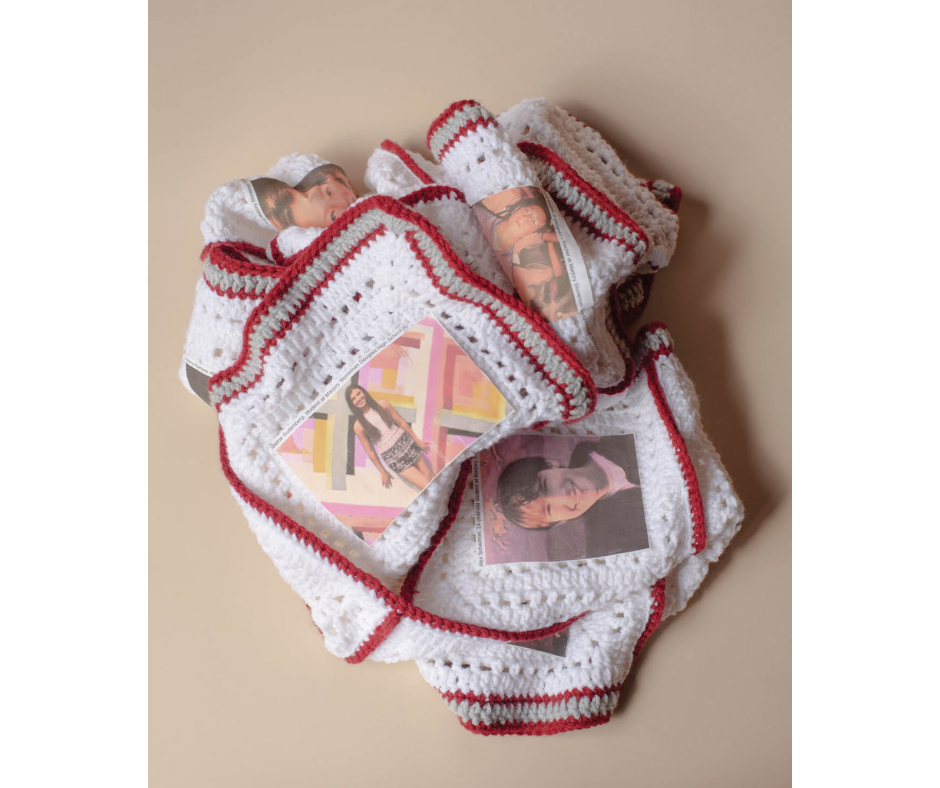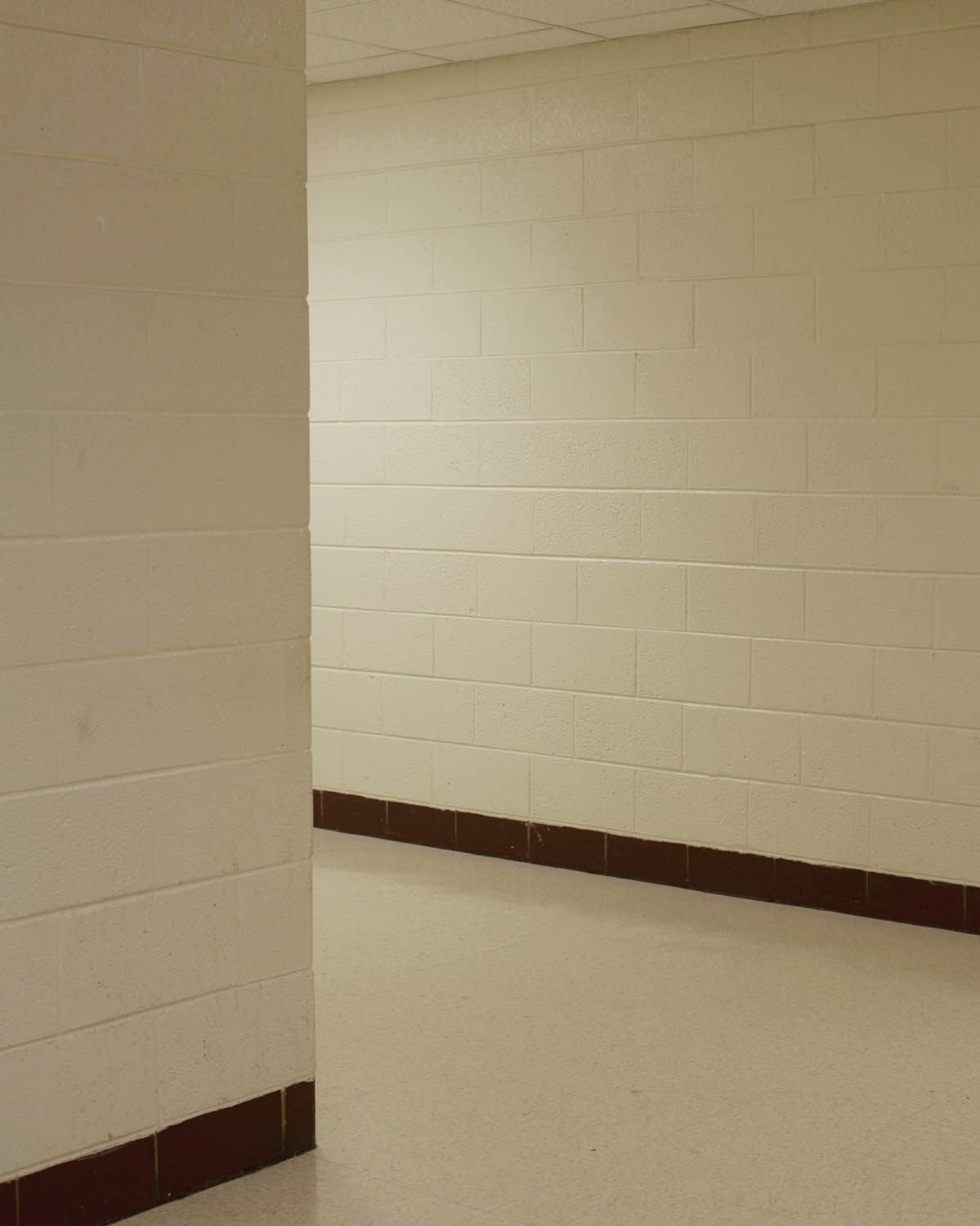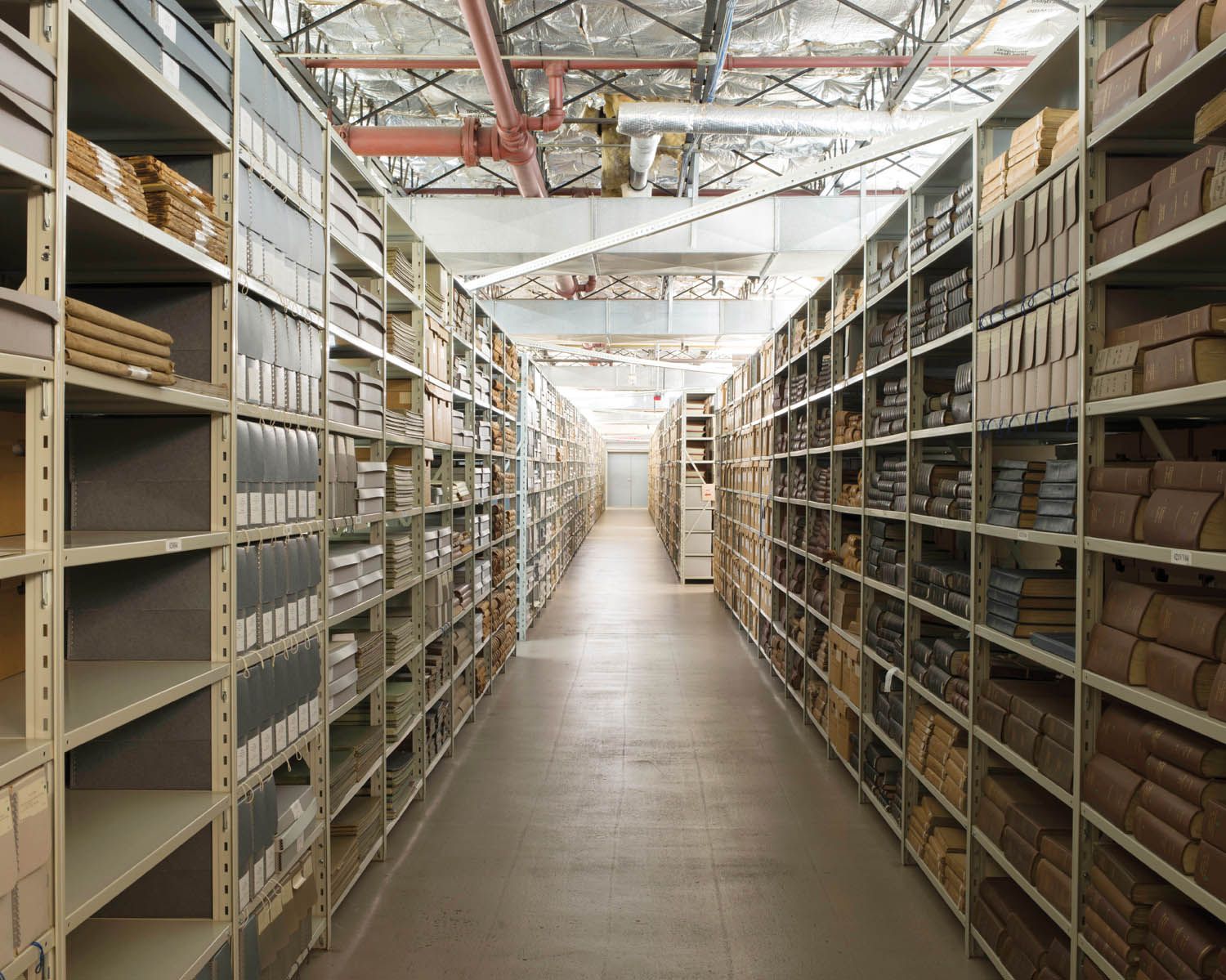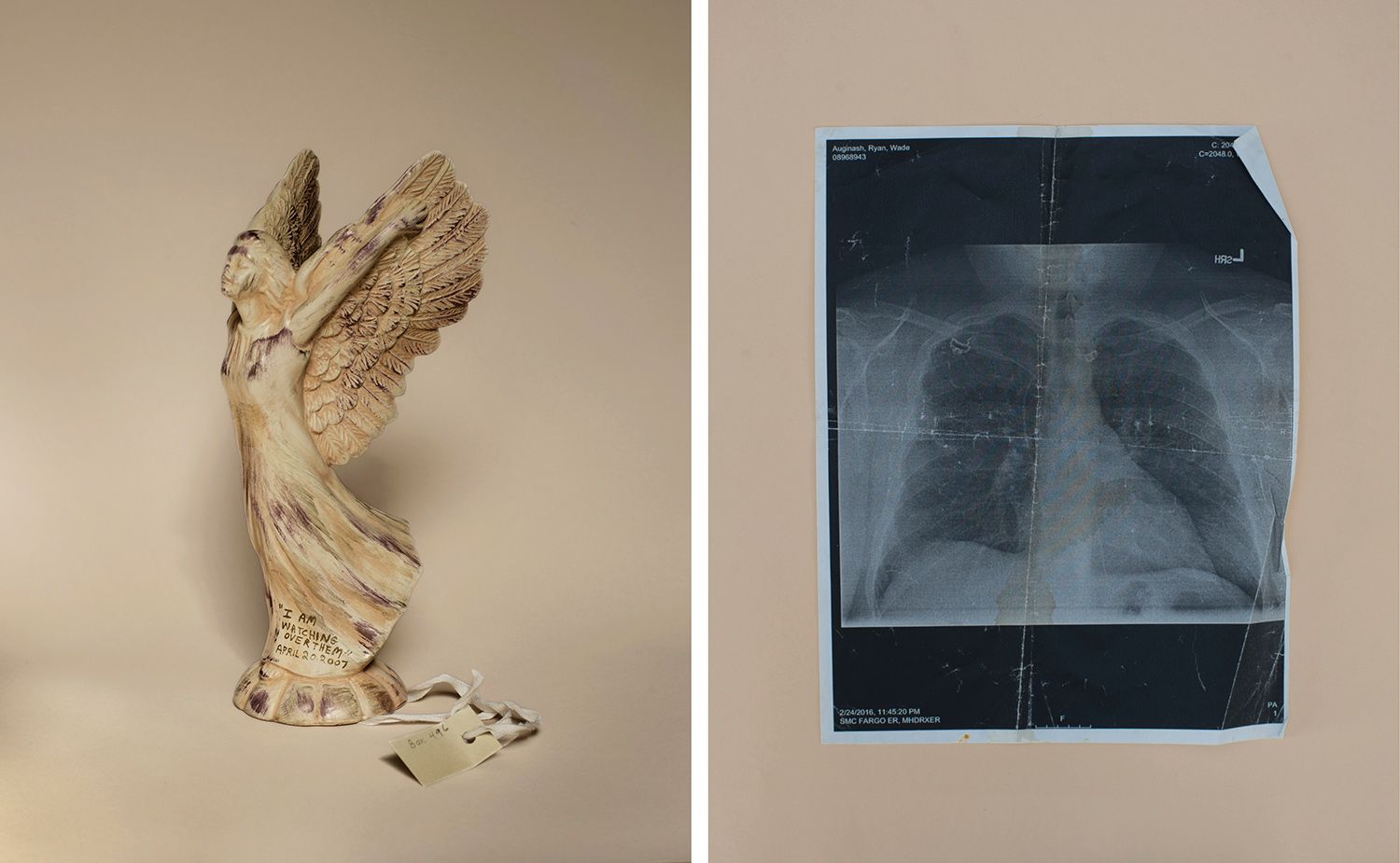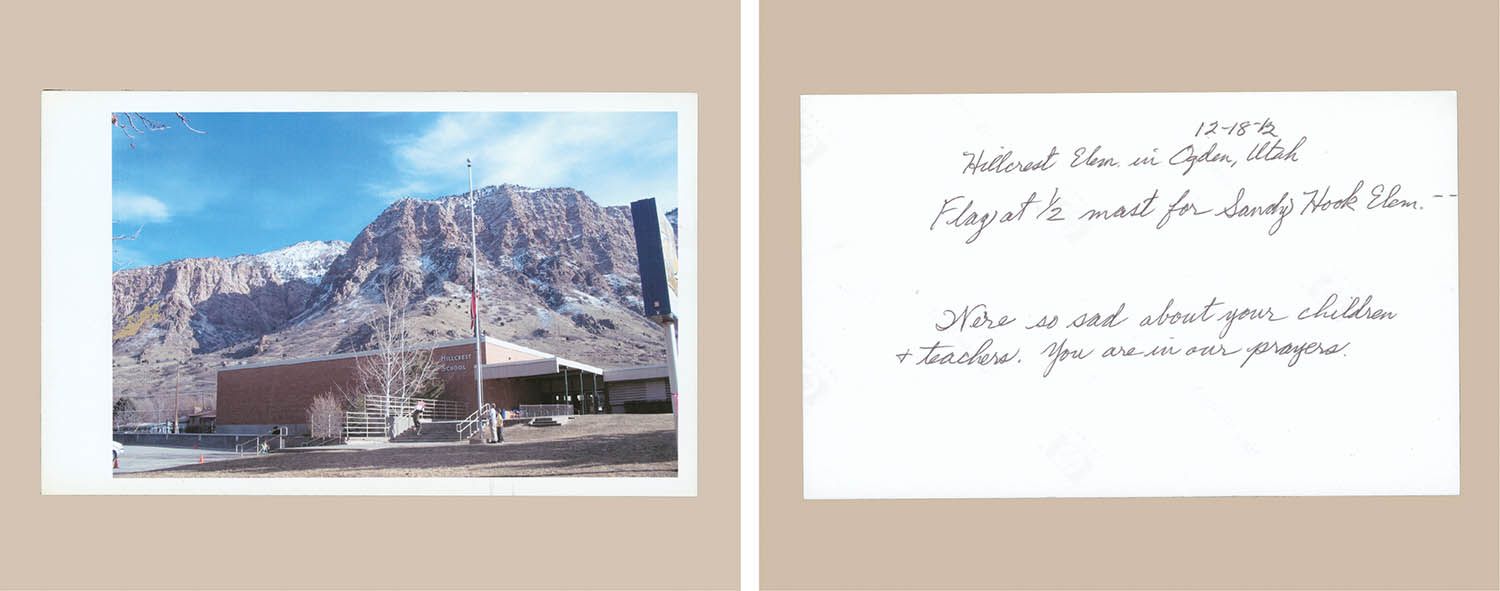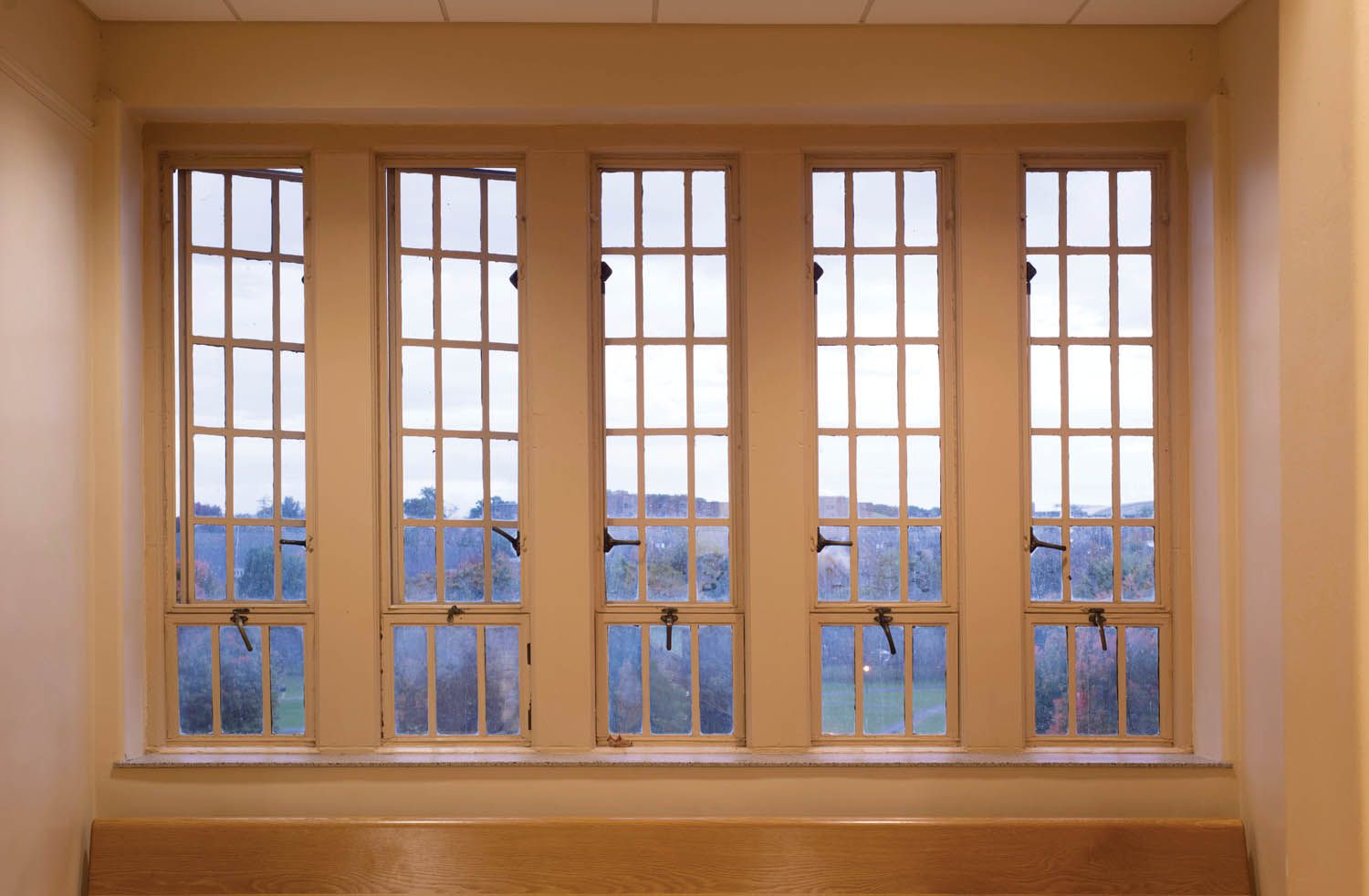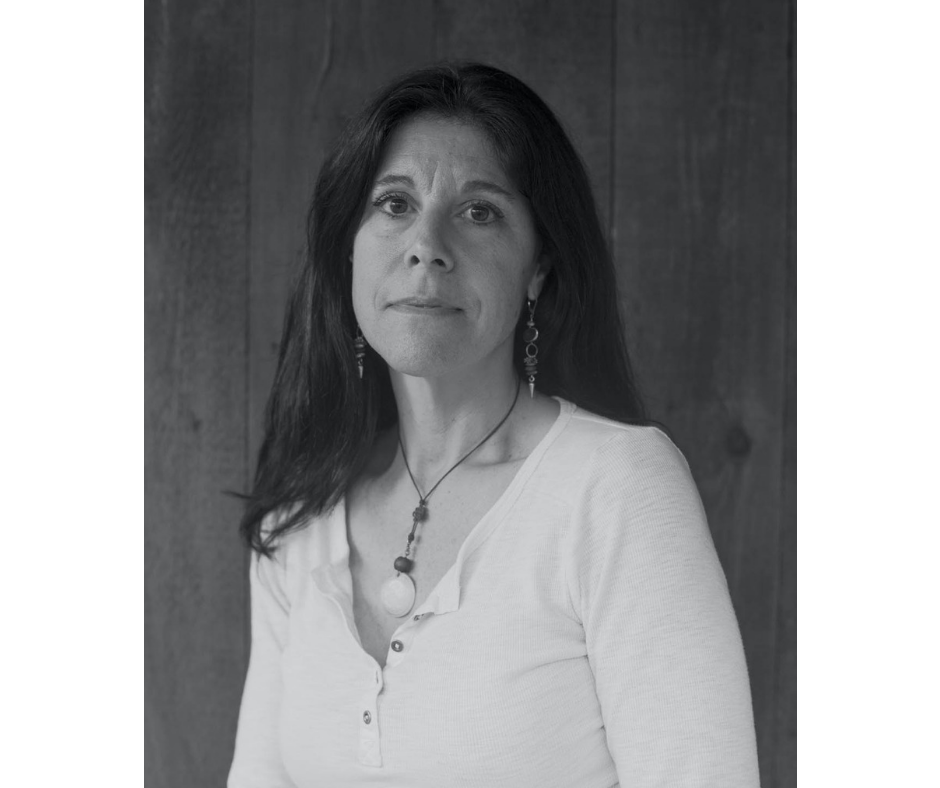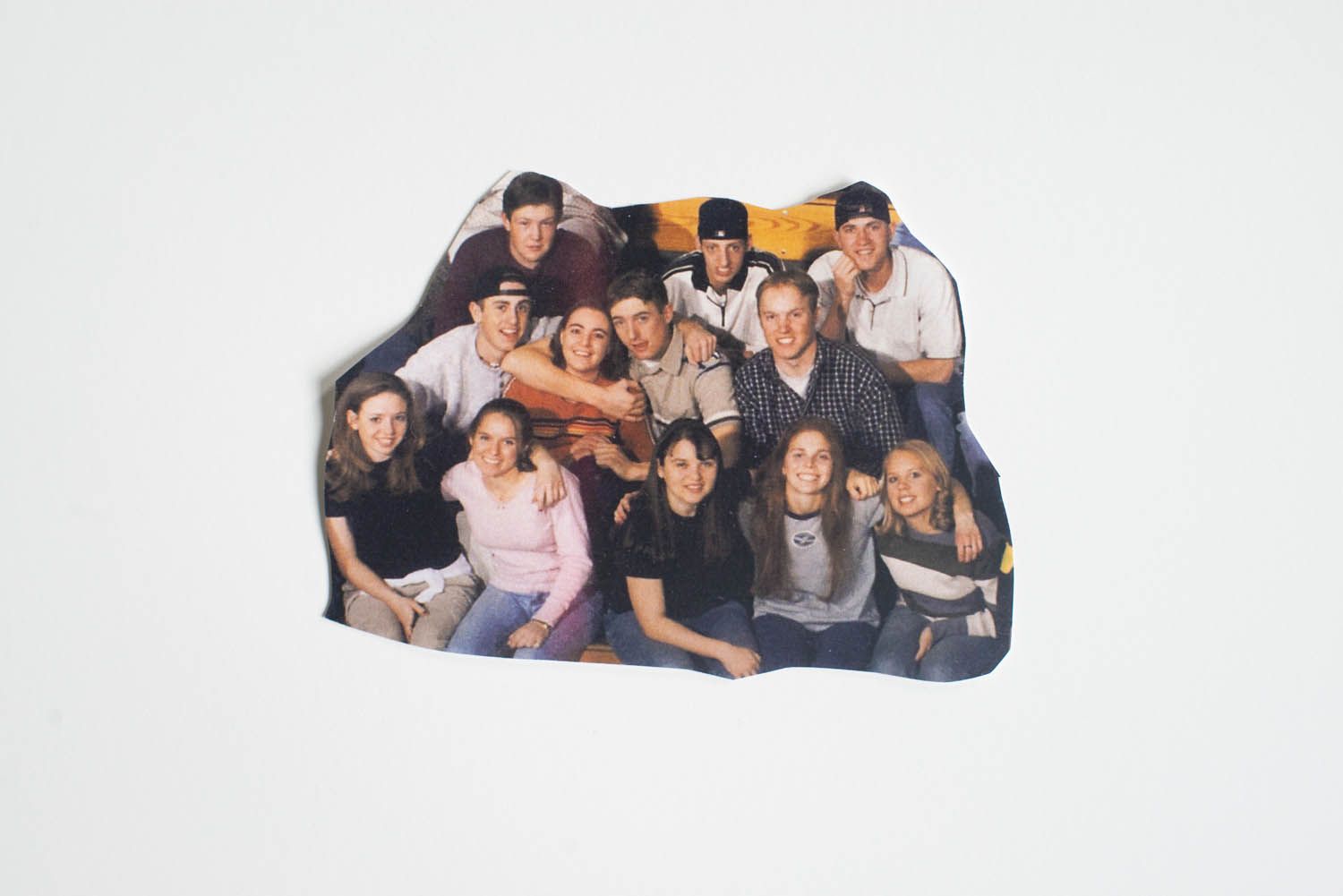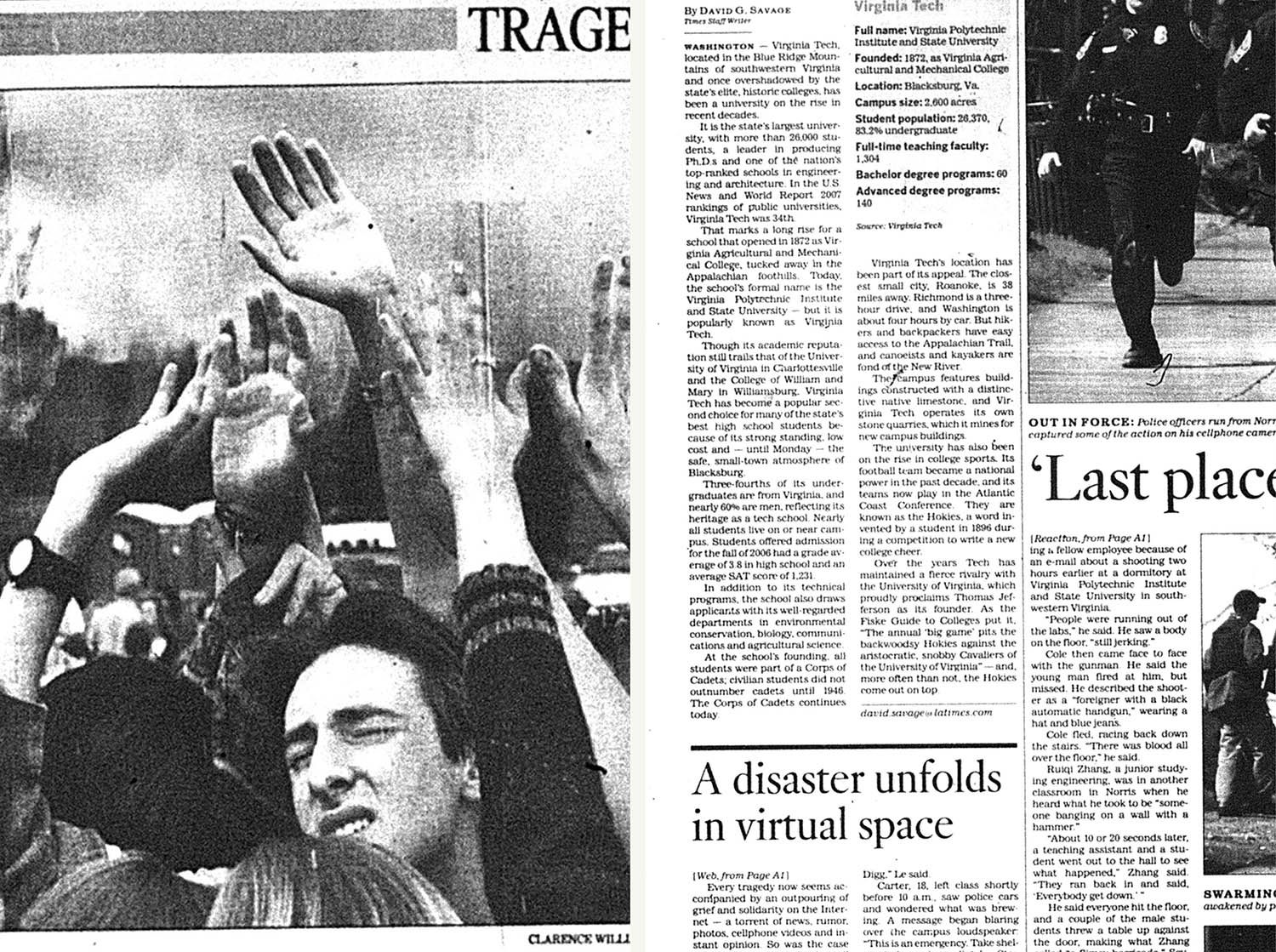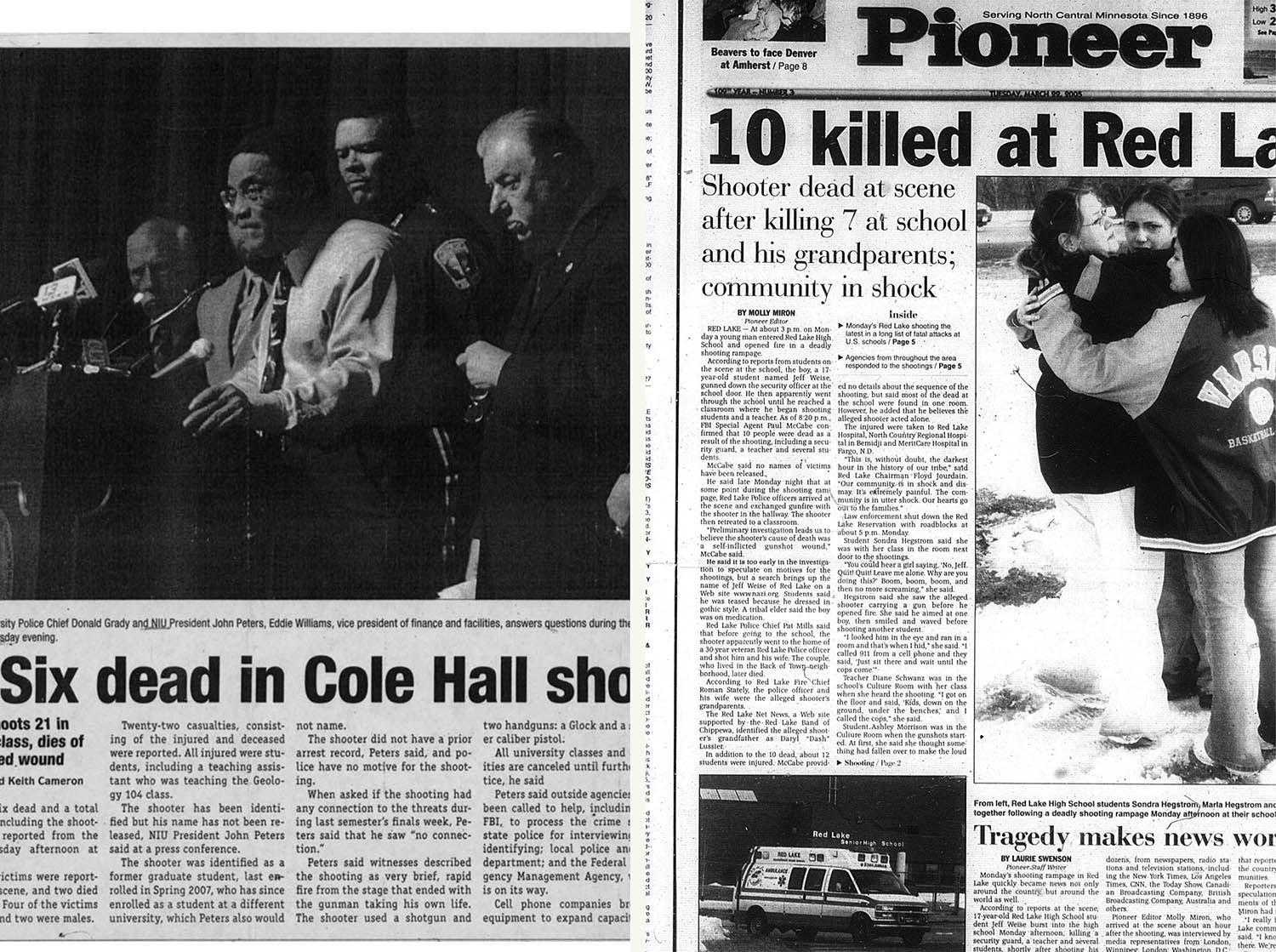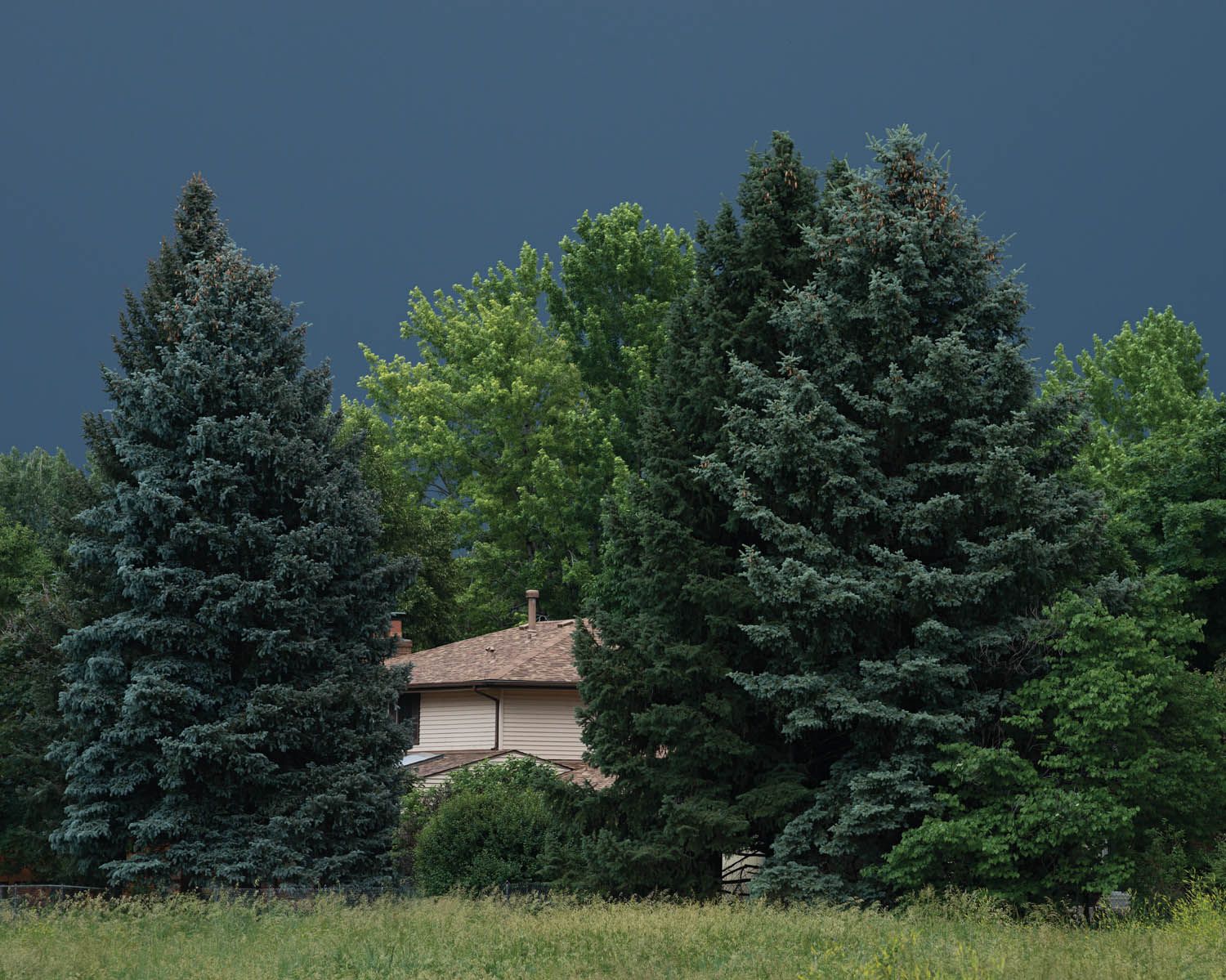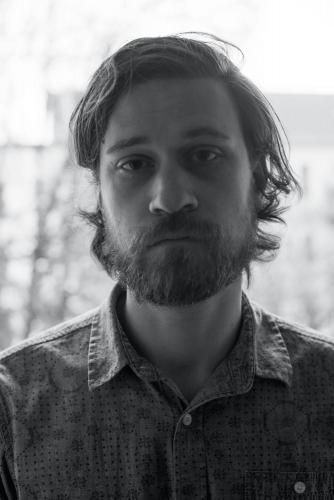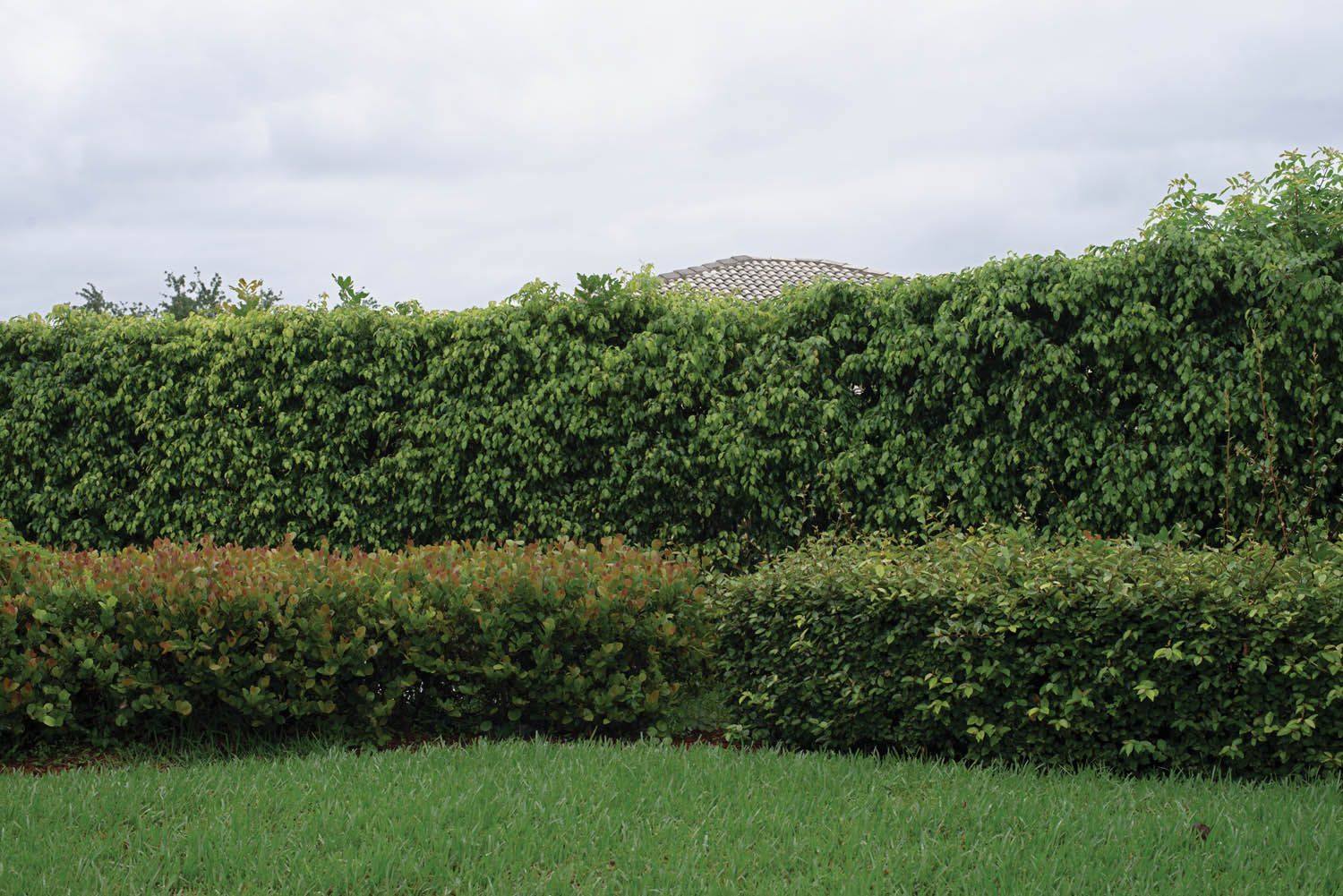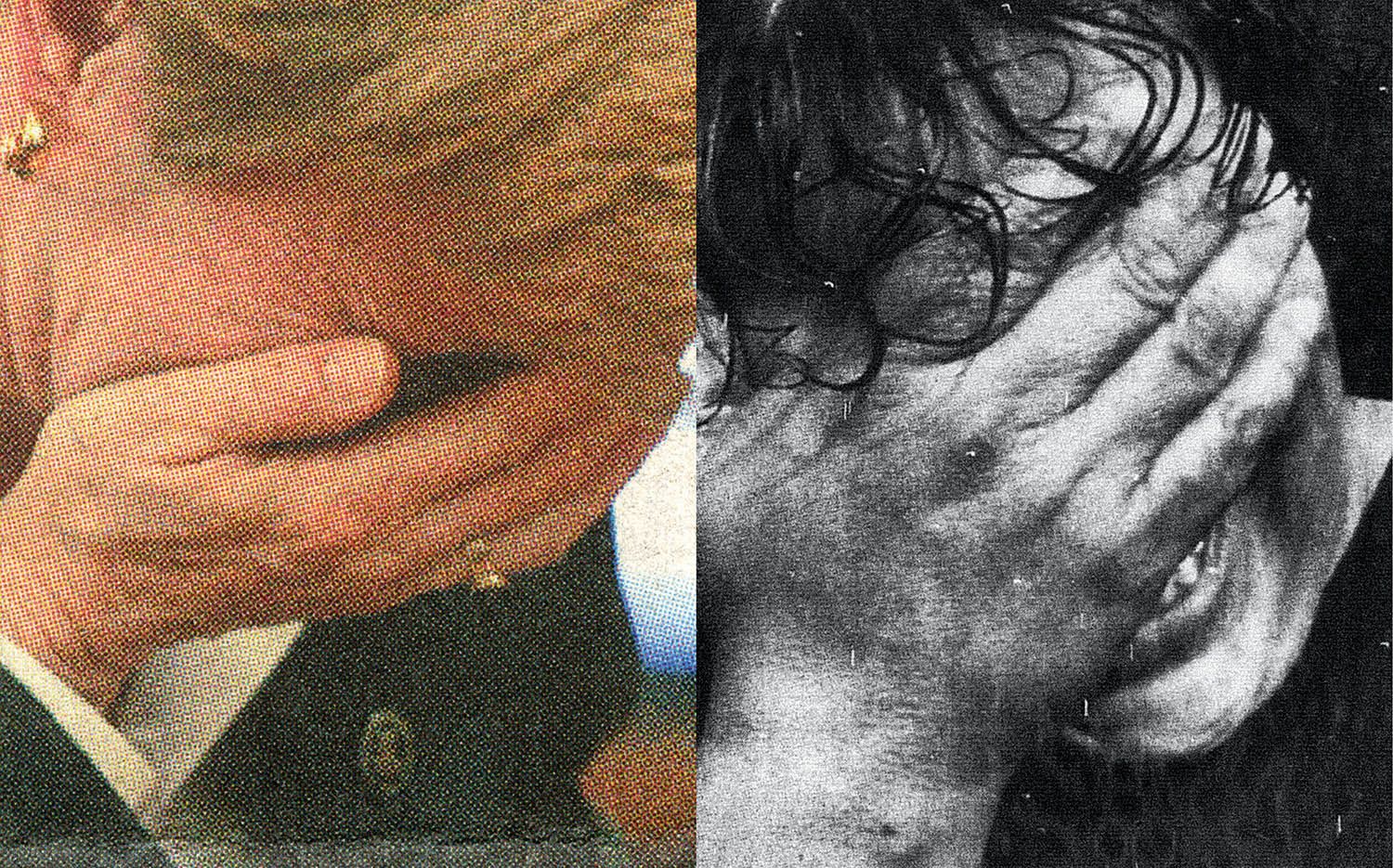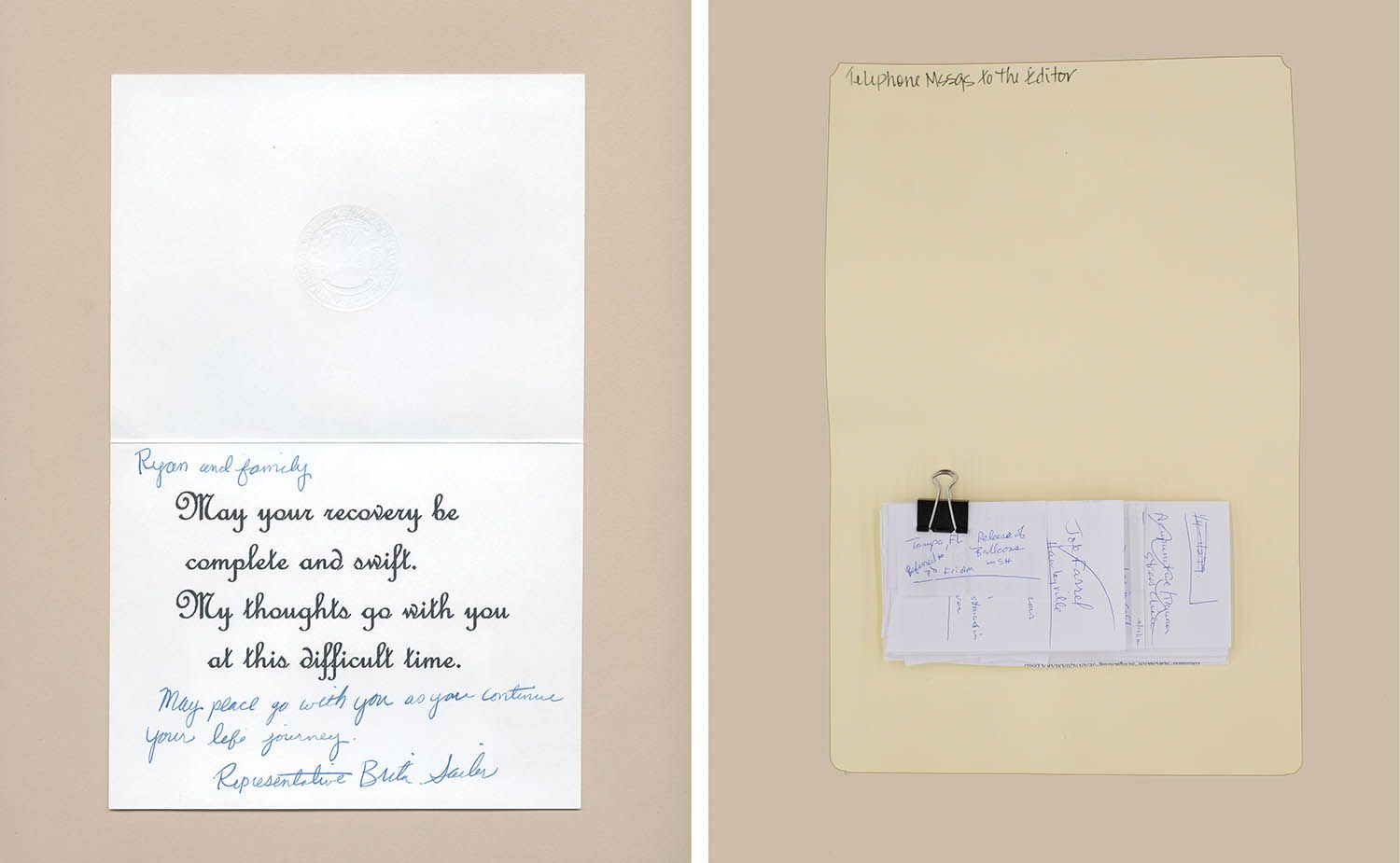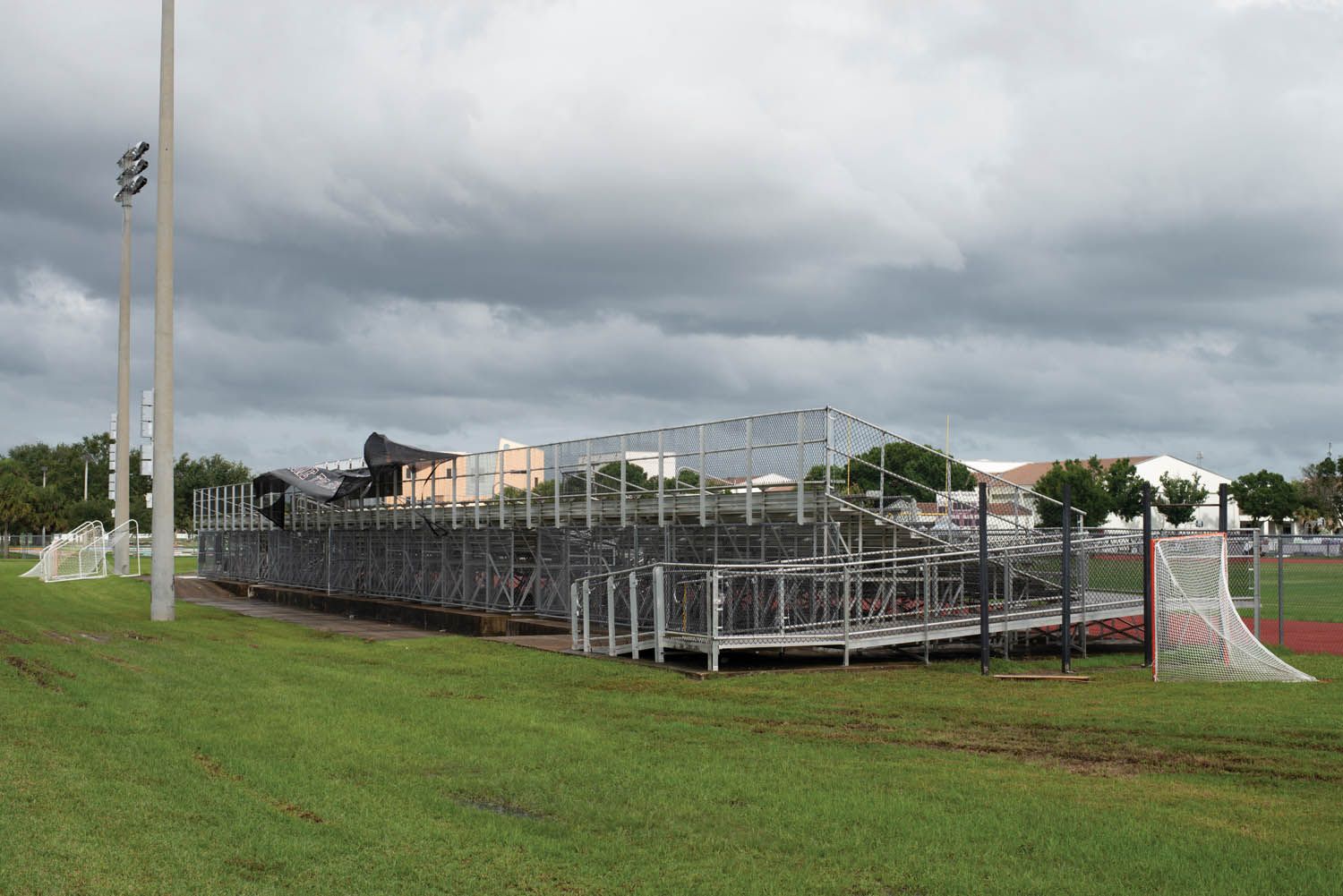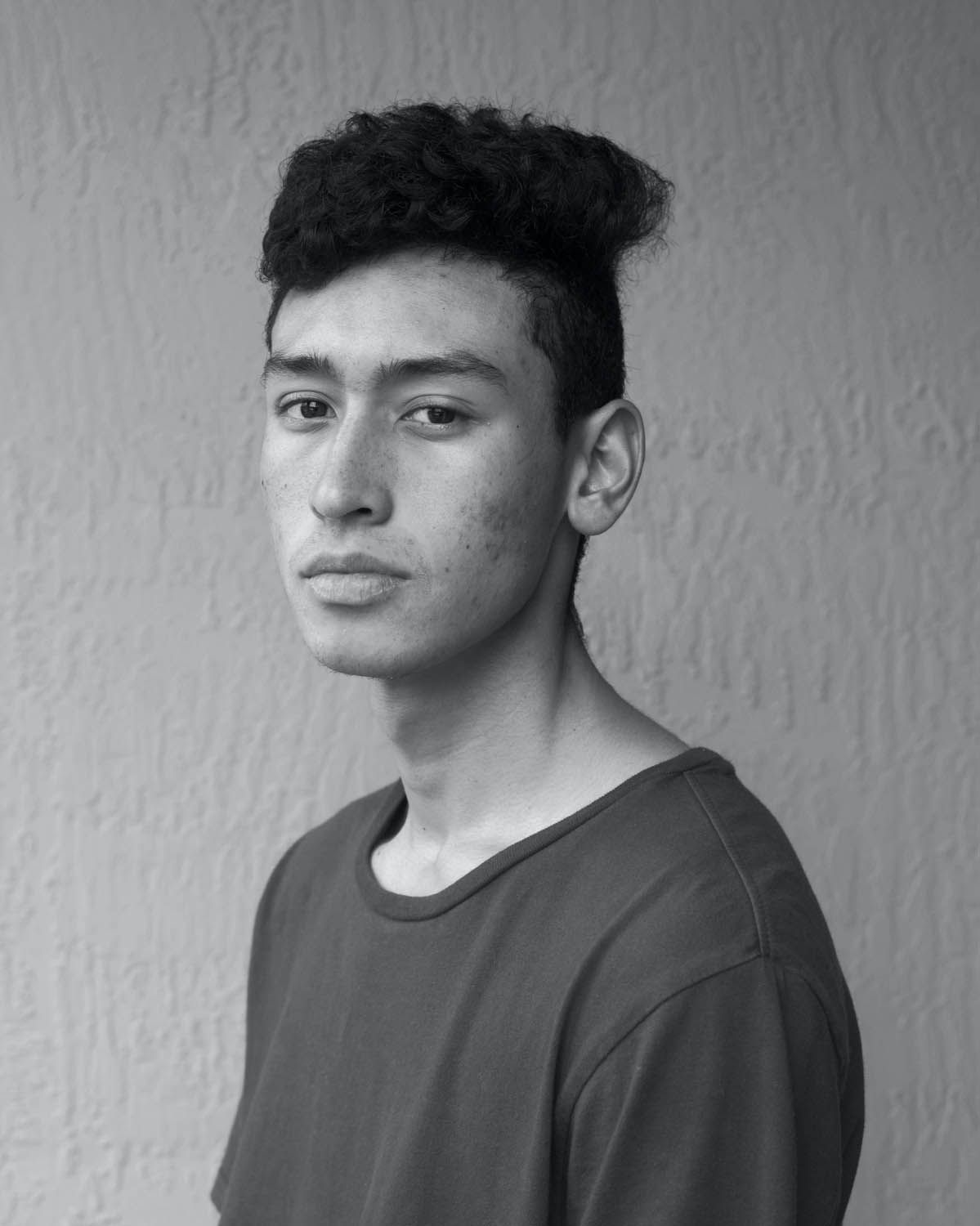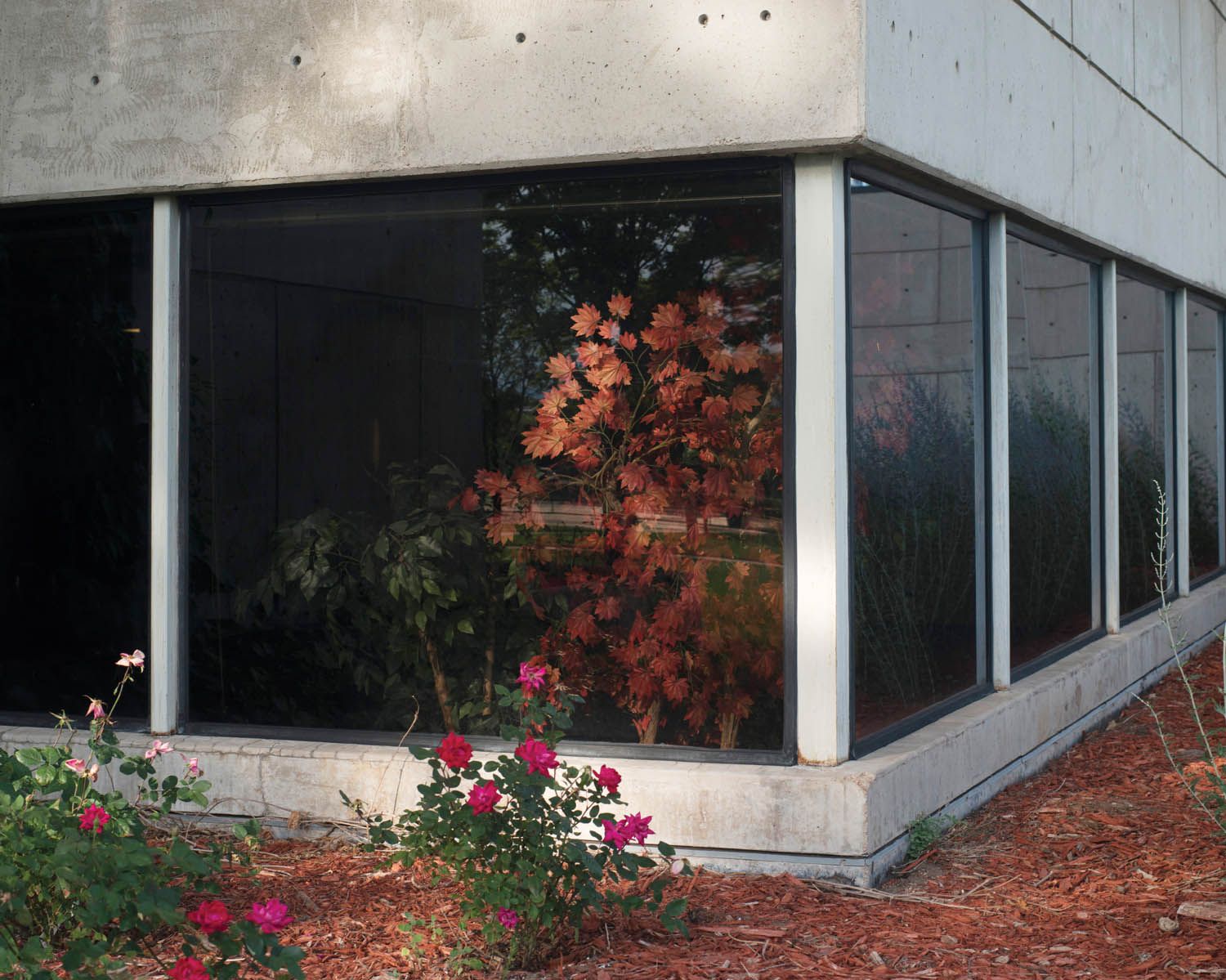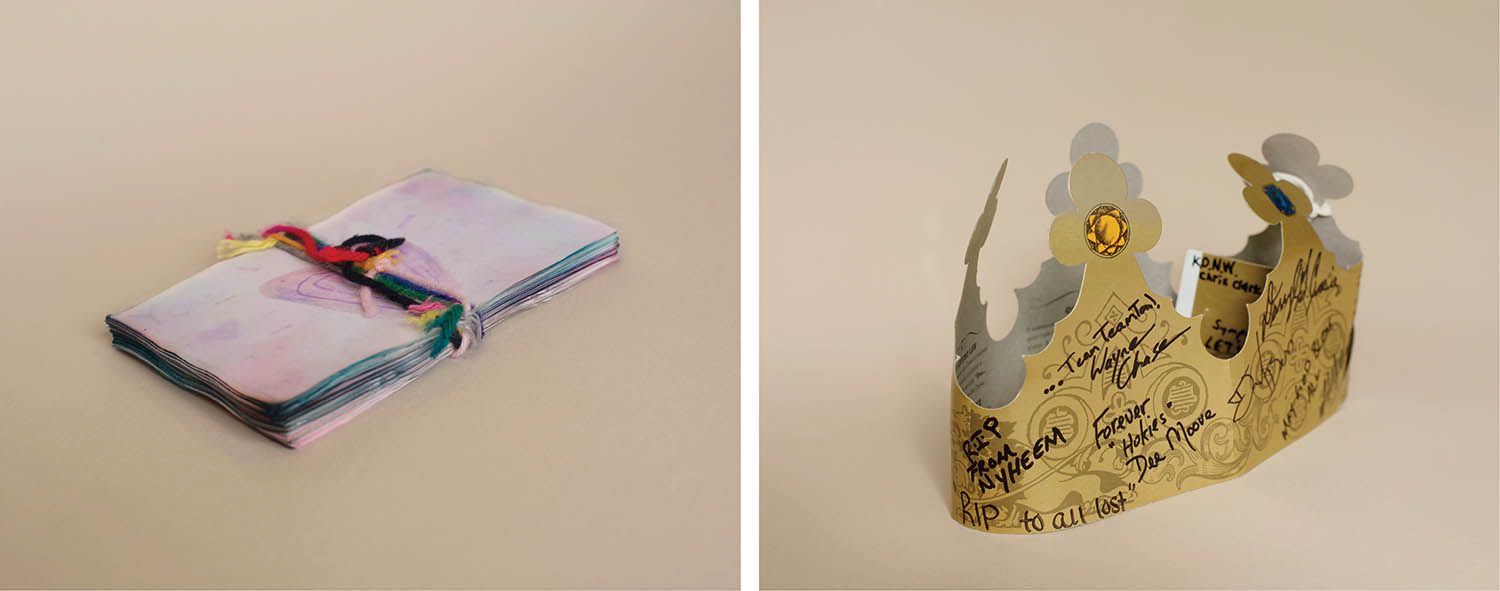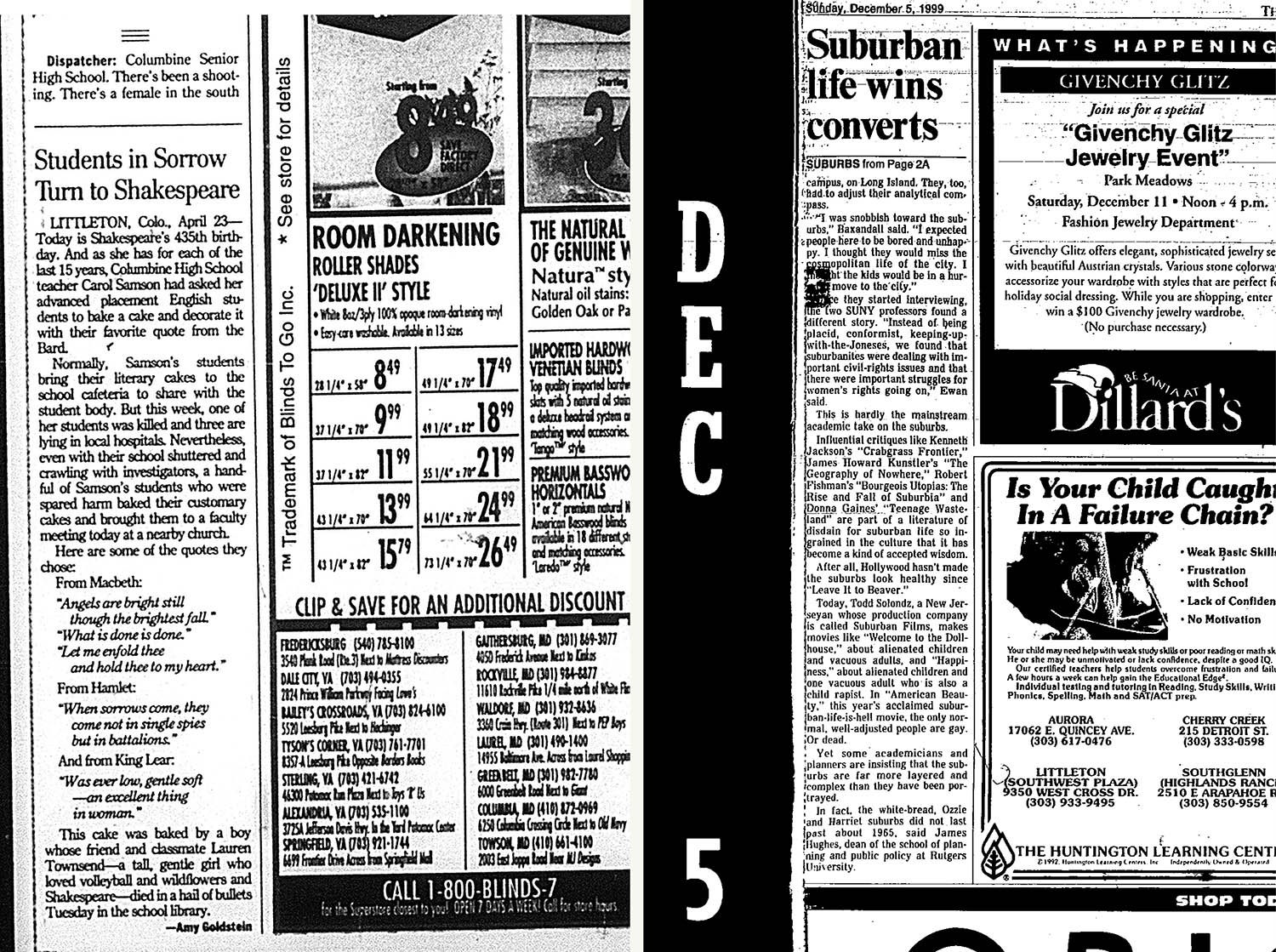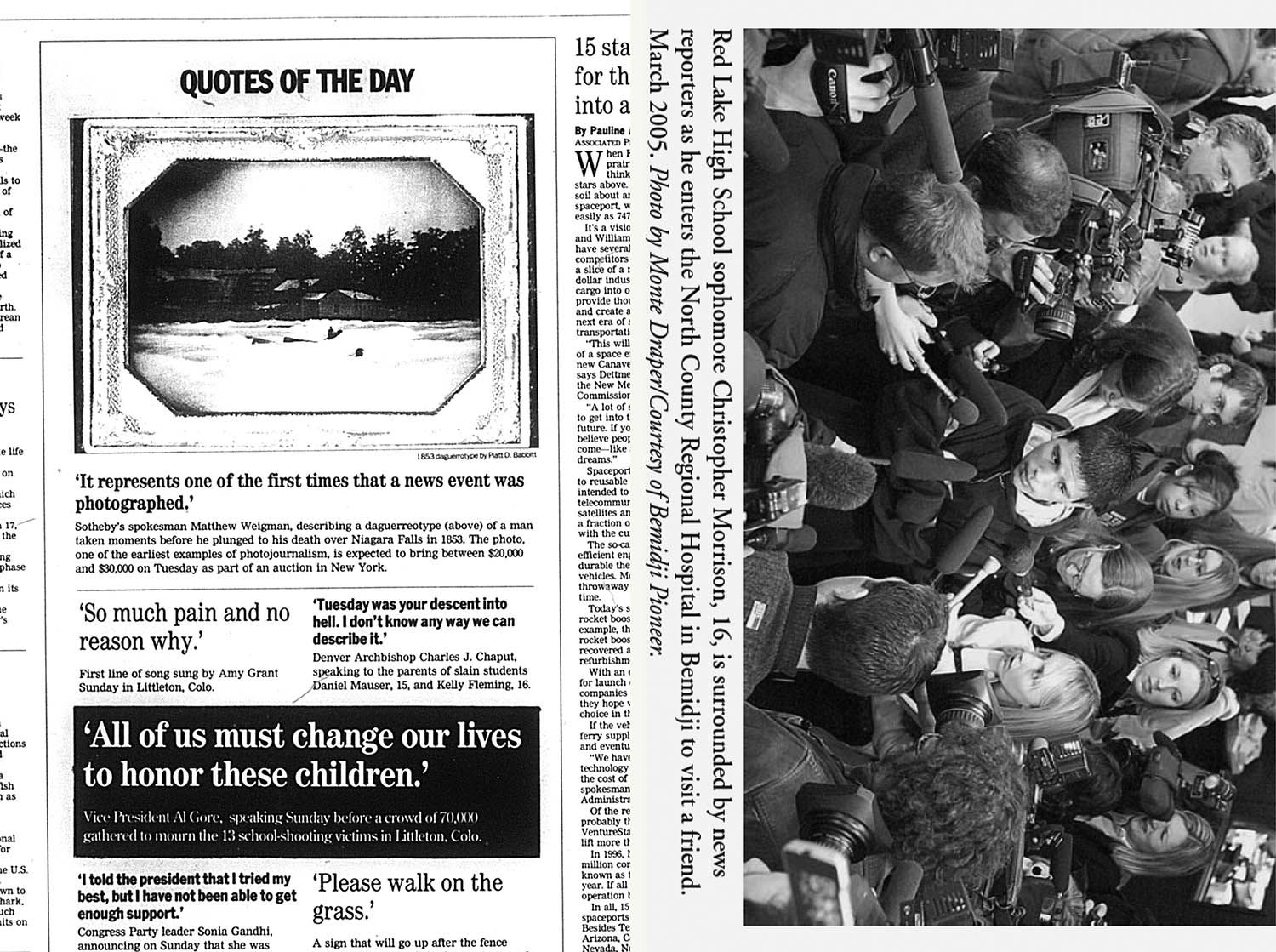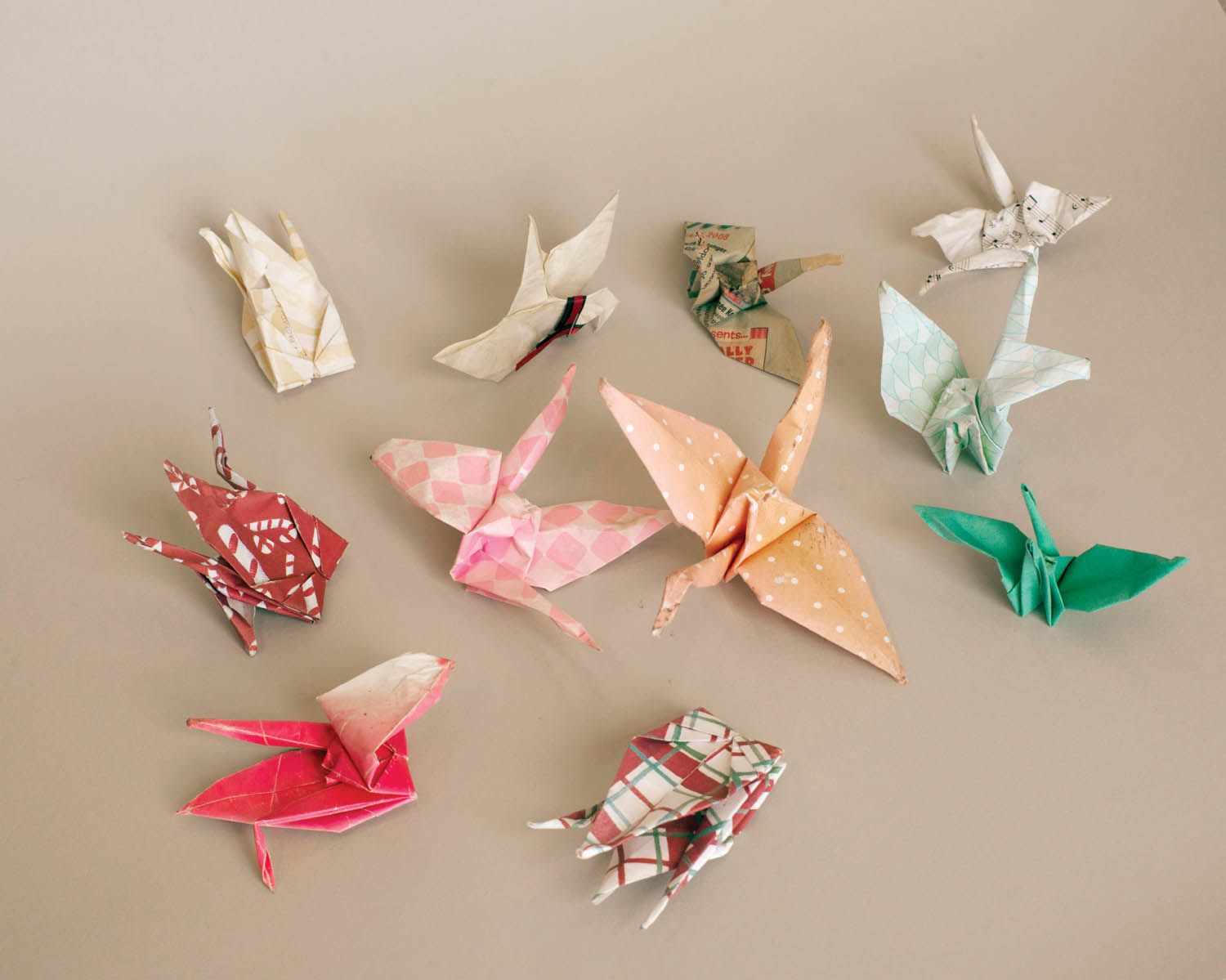Japanese legend has it that anyone who makes 1,000 paper cranes will be granted any wish, a piece of lore rooted in the cultural reverence for this regal bird, which was once thought to live to a thousand years. This story of wish-making was embraced by a twelve-year-old Japanese girl named Sadako Sasaki, who had been struggling with leukemia as a result of the US bombing of Hiroshima. The year she died, Sadako was able to make more than 1,400 paper cranes with the help of her classmates. Decades later, a children’s book, Sadako and the Thousand Paper Cranes, told her story to an American audience, which helped to popularize the ritual of making origami cranes in response to tragedy.
Whenever a mass school shooting happens, the grieving community is inundated with gifts and letters. (In Parkland, Florida, alone, 227 boxes of mementos were collected at Marjory Stoneman Douglas High School within a month of the shooting there.) For more than five years now, I’ve been visiting these communities, studying the massive accumulation of materials sent in response to this particular kind of tragedy. I have sifted through hundreds of boxes of artifacts, mostly stored in basements and vaults beneath state archives, university libraries, and local museums. I’ve found lengthy handwritten letters, confessional letters, letters that express a deep empathy for what these communities may be going through. Most seem prescribed by past tragedies, using sentimental language embedded in our collective memory. Many young children write without seeming to fully grasp the meaning of their condolences.
After the Sandy Hook Elementary School shooting, in December 2012, the communities of Sandy Hook and Newtown, Connecticut, received more than 65,000 teddy bears and half a million letters, as well as paintings, quilts, poetry, and religious memorabilia sent from around the world. Newtown City Hall attempted to preserve all these gifts to the grieving but quickly ran out of room. The items were eventually moved to an airplane hangar outside of town in nine tractor trailers, but soon that, too, overfilled. Except for a selection taken to the Connecticut State Library, the town decided to incinerate the tonnage of gifts and memorabilia. A Newtown resident and amateur photographer named Yolie Moreno heard of this plan and decided to photograph each item on its way to the incinerator. She told me she felt every artifact needed to be touched, opened, seen, and read at least once. The incineration produced a few small boxes of ash, which the city has designated “sacred soil.” The boxes are now stored behind locked doors underneath city hall. Yolie took a small vial for herself. When I asked her if she had actually documented everything, she said yes, except for anything hateful, which went straight into the fire.
Ten people died on March 21, 2005, on the Red Lake Indian Reservation, Minnesota, during the Red Lake High School shooting. The Tribal Archives in Red Lake did not have any mementos in their possession when I visited last year, and few had been saved by the community. Kathryn “Jody” Beaulieu, the director of the Tribal Archives and Library at the time of the shooting, told me that for the Ojibwe, burning the belongings of the departed is common after one passes on, as a way of freeing their spirit. The idea of artifact—and collecting—she said, is a white person’s construct. Skeptical of my motives, she recited to me a few lines from a song at the start of our interview: Here comes the anthro you better hide your past away / here comes the anthro on another holiday.
Our conversation reminded me of something Kristina Anderson, a Virginia Tech survivor, had told me. The reality, she said, was that all this memorabilia becomes a huge burden for survivors and their families—to sift through, to catalog, to store. In her opinion, sending cards and flowers and condolences might be more in service of the giver—perhaps the public at large—than the people who’ve survived the violence.
When I went to the Littleton Museum to go through the material they’d gathered after the 1999 Columbine High School shooting, the archivist brought out a few items she had found particularly moving. There was a pair of deflated balloons in Columbine colors, handwritten phone memos left for the principal—and a letter scribbled in a young teenager’s hand, to slain sophomore Cassie Bernall.
The letter begins casually (“How’s it going up there in heaven? I imagine it is going great”), but moves on to become a testimonial to Cassie’s faith: “You have inspired me to become closer to God.” The writer was referring to a story about Cassie told in the aftermath of the shooting—that Eric Harris had raised his gun to her head and asked if she believed in God, that she had said yes, and then he’d shot and killed her. Cassie’s martyrdom spread throughout the community, and later the nation. The story, however, turned out to be a student’s false recollection.
However apocryphal, the afterlife of Cassie’s story was powerful enough to guide this letter. It speaks to how the stories we hold closest, those that help us cope with forces beyond our control, can take shape in the ambiguous space between truth and emotion. Much of what I was finding seemed to embody this conflict between fact and feeling, history and memory, the rational and irrational.
Over time, I allowed myself to go deeper into these narratives. Immersed in cruelty, grief, and incomprehensible violence, one tragedy began to blend into the next. The shootings happened in prosaic American spaces, and yet I couldn’t help but sense a loss of place: Except for the plaques, benches, and sculptures that mark the sites, any trace of these events has all but disappeared from the landscape. Walking through these towns and neighborhoods was an attempt to reconnect with places that continue to become more and more unknowable. Walking allowed me to be placed, to be present, only to discover what was inevitable—the intensely visceral presence of absence.
I kept returning to what I could hold in my hand, what I naïvely assumed would offer closure. Now I’ve come to see these archives as filled with scars, these physical embodiments of unendurable memories. And yet somehow—stashed away in boxes, in file drawers, cloaked under cloth—these acts of grief and kindness, sent from every-where and nowhere, are more than just reminders of what happened. Some seem like messages in bottles cast out into the unknown, others an attempt to communicate with the dead. And they keep coming and coming, piling up, one after another after another. Perhaps, over time, these collections will come to seem like monuments. And maybe, one day, all these relics will be thought of as objects of reconciliation—how we attempted to absolve violence against us, and by us.
Yolie Moreno is a resident of Newtown, Connecticut.
A month after the shooting, I’d heard about all this stuff that was coming in, that was being collected at the Newton Municipal Center, and I went to see it. When you walk in it’s this long corridor, with offices off to the side. The walls were covered—I mean, floor to ceiling—with banners and quilts and artwork, and table after table of mail bins filled with letters. When I asked what they planned on doing with all this stuff, they said eventually they were going to burn it, to convert it all to what they called sacred soil, which was basically like cremating the remains, because no one could conceive of just throwing it all away. It was unprecedented. It was too emotionally charged. And burning it and preserving the ashes seemed like the most reverent way of respecting this. If there ever was a memorial, they could maybe include it in the bricks or stones. I told them I wanted to document it first. They said I was crazy.
But I had to do it. My impulse right then and there was to document it all before it disappeared. See, I went to film school, and I’ve always been the preservationist in my family—scanning photos, putting Super 8 films on DVD, that sort of thing. At first it was just to get what I could, and then someone from Xerox approached me and asked what I planned to do with all the images. I didn’t really know, so he put me in touch with someone from Xerox and they donated scanners, set it up so that everything went directly to a Dropbox account, and they agreed to help manage the files and build a website.
And so we started. I would take a tray of stuff and I would kneel down on the ground and take these photos. I ended up with something like 20,000 images on my website. I had a whole team of volunteers, and we had to sort through all of it, because there’s all of this stuff and you feel responsible for letting people know that it was touched, that it was opened. But we needed some kind of organization, so we did it by location. We wanted to make sure that we had a category for every place on the planet that sent something, even if it was just one letter. I think we pretty much did. There was even a school in Liberia that sent something in. It was pretty extraordinary.
We spent so much time sorting, sorting, sorting—and reading, because we wanted to read everything. We also sent thank-you notes to people. Eventually, everything we had was pretty much sorted. But it was just so much. So I began to think: Okay, I’m not documenting that, because there was a lot of—well, a lot of religious stuff, and so I said “ad nauseam” to that. I was like, Nope…nope…nope…they’re not in a better place…nope, and I don’t care if Jesus loves you. It was really overwhelming, and awful.
The archivist from the Hartford library wanted to start making choices, to put together an actual professional archive. We had our favorites, what we felt was the most powerful stuff, things I thought were truly remarkable, and I would pass those along, and if she liked them, that’s what she ended up putting in the Hartford archive.
I also helped manage the stuff that was coming in directly to all the families. Day in, day out, people were sending things. The stuff would go down into the basement and would be put in boxes, and when the boxes were full someone would bring them over to a family’s house. There were so many portraits. People sent beautiful drawings and paintings of their children. But some families were like, no, that’s not my kid, so it would go to sacred soil.
But nothing was thrown in the garbage—I mean nothing. Whatever was left went to sacred soil. Everything I rejected went to sacred soil, too. I drove my truck back and forth, back and forth. I mean, you just can’t fathom how much stuff there was. People were desperate to let the victims know that they cared, that they were thinking of them, but after a certain number of months it was just too overwhelming. Even the memorials that were on the street, all the teddy bears that had been soaking in the rain and snow for weeks, and the candles, and the flowers— everything was all crusted and dying. People sent in over like, 65,000 stuffed animals. What on earth do you do with it? These families are grieving, and the last thing they’re going to do is go through this stuff. Are you going to throw it in the garbage? How many teddy bears and candles and statues of Jesus and crosses can you take? They finally incinerated all of it in October 2013. All of it burned down to fit into a three-by-three-by-three box.
I was actually helping a couple of the families. One of my tasks was to go through some of their boxes and determine what they would and wouldn’t want. There was only one family that did not want to see their stuff, I think, or two. They just didn’t want it. We reached out, and we’re still keeping it, because you just never know. Maybe one day they’ll want it.
And I’m always thinking, when you see a documentary about something from a really long time ago, the documentary exists because somebody literally saved something. There are photographs, and you have this archive that you can access to tell a story. The world’s response to Sandy Hook was unprecedented. People sent these amazing letters. And just based on my own life’s experience—you know, my brother was killed in a car accident when I was eleven. We didn’t have therapy, we didn’t talk about it. So that took me into my twenties. I also lost my first child. I try to imagine what it would’ve been like for the entire world to come out and send our family letters and gifts saying, We love you, we’re thinking about you, we’re so sorry. How amazing a feeling would that have been?
For this project, though, I was mostly thinking about the kids who couldn’t read yet, who were still little, who weren’t going to remember much, so that when they’re processing this—their whole lives, really—there’s a place they could go, or where any of the parents could go in their darkest hour and just read amazing, caring letters and see beautiful artwork, things that could help them through that time. Because there’s nothing in there that’s hateful—we got rid of all that stuff. If there was anything wacky, we gave it to the state archivist to deal with. It’s out there, because that’s all part of the story, but not for my project. My project was about love, and that was it. And yet sometimes I would feel so…responsible. I would just think, Is it down to me? How? I just moved here—how did I become this thing?
And, I mean, it just kept coming—on and on and on. The incredible thing is, all of that stuff burned to ash that fits in a box that isn’t even that big. I took a little. I had these little glass vials, and I put a little sacred soil in them. I was lambasted for it. Some of the families found out about it and freaked out. They were like, Who is this person? How dare she! This isn’t hers to take! Because, you know, it was like a cremation. This was still all their children, their loved ones. Imagine someone—you have no idea who she is—has a little piece of your kid’s ashes. Maybe that’s how it felt to them. I will say that I was mortified at first, just so hurt, because I never was an opportunist. I’m just a facilitator. But then I thought, Whatever they feel, they’re entitled to feel. They’re mad, and I get it.
And people moved right on. Unless you had a child who was murdered, or a loved one who was murdered, unless it personally affected you, people moved on. I think it’s awful. I’m one of these people who, when petty bullshit is happening, I’m like, Does anyone remember where we live? Does anybody remember that day? Where you would see somebody and just hug them? Because the humanity of what happened was so overwhelming, nothing existed other than the urge to help, love, be kind and caring.
I will say that when I was finally finished and the website was online, I kind of had a hard winter. That was a little bit of a hard winter, because it was such an intense experience. I met unbelievable people. I still take care of the graves of some of these children, because the families still don’t want to go there. I thought I was okay mentally. Then I started thinking that maybe I was coming down, maybe there’s this let-down, of finally being done, processing the enormity of it. I think I did a little bit of that. I won’t say that I broke down or sobbed. I would just channel anything into helping. That’s what always helps me. Instead of sitting there, wallowing in self-pity, I asked myself: How can I take this and make an action that’s worthy of something?
You know, stuff came in for the Lanzas, too. Anything that came in for the Lanzas went directly to the family estate. And that was it. We weren’t allowed to document it. There wasn’t a lot of hateful stuff. There was, in fact, some nice stuff saying this woman was murdered too—you know, the mom. They always say twenty-six people died, but it was twenty-eight. But that’s not what Newtown does: It’s twenty-six people, because she was responsible, and he was responsible. They demolished their house, too. The town bought the house and now it’s demolished.
The thing is, I believe that sometimes there is a darkness. That house was just a house, but not. It’s just dark energy, just a place of sadness and despair. You can release that, you know. Do you know what “smudging” is, when you cleanse a space with burning sage or something? I did that, I did that for all these spaces. I’m not like a shaman or anything, but I kind of believe, you know? So they asked me to smudge the Sandy Hook fire department, and I went over there and was just, you know, clearing the space of sadness and despair, and horror. There was the one back room where all the families that were left were told their children weren’t going to be coming home. I would say, “I clear this space of sadness, and horror, and despair, and bring in life.”
Just like that, over and over.
— As told to Andres Gonzalez, September 25, 2015.
Clay Violand is a survivor of the Virginia Tech shooting.
At the end of it all, the police worked their way through the door and scanned the room with their guns. I think I remember one of them saying something along the lines of, “If you can get up, get up.” There might have been one girl who was able to get up despite her wounds. I can’t be sure, but in my memory, I stood up, looked around, and I was standing alone.
It’s incredibly difficult to be a part of something like this and be on this periphery. Why did I not get shot along with everyone else? Why was I the only one spared in that classroom? A lot of people’s reactions were, “Oh, you must feel so fortunate not to have been shot.” But it hasn’t been any easier for me. I think it’s a mistake to think that, and I think Virginia Tech made this mistake, perhaps, assuming that it would be easier for me because I didn’t get a bullet. I mean, that’s what I ended up thinking myself. And that’s how these years of self-punishment and guilt started. I got spared, you know? I didn’t feel like I deserved to not get shot. Then this psychological confusion about who’s team I’m on. It sounds really dark and morbid, but the mind does amazing things when it’s put under a situation like that.
After the shooting, the school dictated my role in the tragedy. I suddenly had this new persona in the eyes of the community. I was a “tier” survivor, lumped into a separate category. I was in Tier 3—you know, Tier 1 being the deceased, Tier 2 being those who were shot, and then Tier 3, what they called “present but uninjured.”
People started making up their own ideas of how I must feel. But I had a really delayed reaction. For the first half year after the incident, those were the best few months of my life. I was just high on life. I thought I was the luckiest person in the world, so fortunate, didn’t have any worries. I was just so glad to be alive. Six months later, I just fell, and I fell hard.
I see it now as just one long, drawn-out process of subconsciously bringing myself down. It started by my becoming a hypochondriac, thinking I must be sick in some way, just inventing reasons why something might be wrong, trying to come up with a way I might be dying.
Then I got incredibly depressed, pushed away all my friends, moved out of my house, quit playing music. Everything changed. This survivor’s guilt started creeping in, and I don’t mean lying awake at night feeling guilty that they’re dead and I’m not. It’s not explicit like that. It’s just this subtle, complicated, subconscious dynamic. It’s like depriving oneself of happiness because you have to pay some kind of price.
Sometimes I think maybe I did get shot and died that day, that maybe I’m actually dead, maybe I’ve been dead all these years. When it was really bad, I was thinking maybe this is hell. It’s incredible that I didn’t get shot, but I think it was just chance. I don’t think there was anything else involved.
Then the shooter killed himself—and in doing that he deprived us all of the chance to find closure. There was no trial, we couldn’t face him, tell him how we feel. I still have a problem—well, let’s call it a difficulty—of feeling angry at him. I don’t know who he is, and I still don’t really care. But I should care. The goal is to care, and to be angry at him—to not be angry at myself but be able to place this feeling on him, and I still can’t do that. I picture his face. I picture him as he’s walking through the room with the gun, and I don’t feel anything. I want to be able to picture him and I want to punch that face, to put that anger where it should be instead of getting angry at my friends and family, letting my aggressions out elsewhere.
But at times I’ve definitely felt moments of empathy, and it makes me feel so guilty. He doesn’t deserve empathy, and I don’t want to give him empathy. I guess I’m stuck right in the middle, you know what I mean? That’s the moral of the story: I’m in this middle position, and it’s very difficult. No more difficult than for anyone else but, like I said, I think a lot of people expect the experience to be less difficult for me, as if not getting shot made me less present in that room.
— As told to Andres Gonzalez, March 12, 2016.
Carlos Rodriguez is a student at Marjory Stoneman Douglas High School.
I was born in Caracas, Venezuela, and my family moved to the United States in 2009, when I was eight years old. The main reason we moved was because of the political corruption and violence in Venezuela. We went back for a month when I was still a kid, so I could get my ID card, so I could be identified in the world as something. When we were there, it was difficult for me to sleep, because I didn’t feel safe. I felt like at any moment somebody could come to our house and rob us or kill us. So that whole month I was there, I was terrified. One night we started hearing gunshots, and we found out the next morning that our neighbor had been kidnapped.
It’s unfortunate, because I really miss my roots. I miss my family that’s still there. I miss my friends, my school. I miss talking Spanish all the time. Sometimes I get sick of the English language because I miss home. But it’s so bad there that I’m also really, really happy that we moved to the United States. We moved here for a better future, we moved for a better life. Parkland is very quiet, very safe, very controlled. And that’s one of the things that left me speechless on February 14, the fact that we moved here for safety, and that I experienced a horrible tragedy at my school. It kind of broke my heart.
Moving into the school was sort of difficult. I remember being really quiet all through freshman year. I made friends, but it didn’t feel like they were my friends. Freshman year, I kept a lot to myself. I already had my YouTube channel—I started that in seventh grade. I love doing videos and editing. It’s a lot of fun being able to create from your own perspective. In fact, what brought me together with people from Douglas was the channel and my videos, because after they knew who I was on the last day of freshman year, they were more intrigued, and they were like, Whoa, this kid was in my class and I never talked to him!
And so, I brought my camera that day, because I wanted to make a Valentine’s Day vlog. I just wanted to highlight all the beautiful gifts—the hearts, the balloons, the moments we were sharing with our friends. Around 2:20 p.m., though, it wasn’t a Valentine’s Day vlog anymore.
I was in Spanish class. At one point, some of the administrators started coming out, and I saw through the expressions on their faces that something was very wrong. My guidance counselor, Mrs. Paula, who is very calm and serene, was on the verge of crying. I’d never seen her like that, so I knew from that moment that we were facing something dangerous.
As soon as Mr. Porter locked the doors, I knew there was a shooter. I didn’t know where, I didn’t know who. But I knew it was a possibility. We hid in an office nearby, and that’s when I saw Mr. Albert, one of my favorite teachers. I asked him—because he likes my YouTube videos—if he wanted to be in my vlog. He said he didn’t know if this was the best time. I still wasn’t too sure what was going on, but I decided to pick up the camera, and I was like, “Hey guys, I don’t know what’s going on. Something’s happening in my school. I’m going to try to find out more information, and I’ll keep you guys updated.” And then they told us to get up and start running. We ran to another classroom, then another classroom where all the windows were taped and the window next to the door was also covered.
My friend Sebastian pulled out Twitter. He’s like, “Guys we’re trending number one! Like there’s a livestream.” And when we saw that I was like, Wow. All right, we’re trending, something’s happening. I grabbed my camera and I was like, “Guys, there’s a shooter on campus, there’s a shooting at my school. I don’t know what to do. We’re scared. We hope nobody gets hurt. We hope our friends are okay.” And then we turned off the camera and started praying. We prayed in English and we prayed in Spanish. I texted my mom. I didn’t want to stress her out, so I was like, “Hey, there’s a shooter on campus but I’m okay. I’m hiding. I’m praying. I’m with Sebastian and Alec. Don’t worry.” My dad called me, and he started crying, and I knew that I would start crying, so I was like, “I’m okay. I love you. Bye.” Then I started recording: “Hey, if I don’t make it out I just want to say I love you guys. Thank you so much for the support. I loved making these videos, and I hope this one goes up and you guys are able to see it as well. If anyone finds this, please upload it.”
We lay there for a long time. A lot of students were crying, a lot were scared. Some were making jokes because they didn’t know what was going on. They thought it was just a drill. Then Sebastian gets a text and he says, “Isabel got shot.” And I was like, You’re lying. You’re lying to me. That’s when I started realizing my friends were the ones being affected, that this was a real thing.
It was a while before the SWAT team got to us. And when they got to us, it was the worst experience. It was horrible. There were two of them. They busted open the door, they were pointing their rifles at us. I was far from the door, and I only saw the rifles, and I was like, Okay, those are the shooters. That’s it. I’m going to die. As soon as they busted down the door, everyone started crying—everyone—everyone in the room started crying. People started shaking. And a couple of things were going through my mind. First thing: Text Mom “I love you” and tell her goodbye; or grab my camera, say it one last time; or run outside through the door. And before I made any stupid decisions, I decided to think and wait for two more seconds, and I tried to peek to see who was holding the rifles. I saw their uniforms. I had the gorilla pod, the flexible tripod, and it looks pretty weird, and I didn’t want them to think I was the shooter—I didn’t know why they were pointing their guns at us—so I asked Alec to help me open my bag, and we stuffed all the gear in there. Then everybody got up and we got out. And as soon as we walked out, there were SWAT members at every single door. They were like, “Don’t look inside. Don’t look inside. Move. Go.”
We were walking with our hands in the air, and we were placed at the front of the school. We sat there for about thirty more minutes and we waited and waited for instructions. And in those moments, Sebastian got another text saying that Daniella got shot, and that was when I broke down the most, because she’s my best friend. She’s the only person that day who gave me a Valentine’s Day gift. I had the gift in my backpack. I just started crying. Yeah, that was Valentine’s Day.
Joaquin’s funeral was the first one I went to. I had gone to a funeral here in the United States before, but it was for a lady who was 105 years old. Having to see people my age pass away, and having to go to their funerals, it’s like our innocence and joy for the world was completely taken away from us. We’re kids. Knowing that our friends died in our school, in hallways that we walked through, in places where we learned, knowing that they passed away there and that their bodies were just lying on the ground, covered with blood—it tells us that our lives can be taken away from us at any second, and that we’re not in charge of time. Time will not wait for us.
In all honesty, I don’t think it’s over, and I don’t think it will be for quite some time. A lot of times I don’t share with anybody that I’m not okay. I just try to distract myself through the videos. That’s the one thing that keeps me distracted. It keeps my motivation going, keeps me moving forward. I have this talent in creating something, and I need to practice it. So, through these videos and through editing and working with my camera, I’m able to focus on something else.
That’s why by February 16, I was in editing mode. That was when #NeverAgain launched. We went to Tallahassee to talk to legislators about how they could help us. I was talking to the #NeverAgain group but I didn’t know them well. That’s when I started getting into the topic of gun violence, educating myself on what’s going on—there’s obviously something wrong; I’m not the only person who has experienced something like this. Columbine, Sandy Hook, Pulse, the airport at Fort Lauderdale, Las Vegas, people in Chicago and Baltimore. People experience gun violence every single day. It’s the common voice I was now a part of. I was getting to know the #NeverAgain group more. Going to DC, to the March for Our Lives, it gave me all these opportunities to talk to people about what it means to represent Latinos in all of this. It was at the March for Our Lives I met Paola Ramos, the daughter of Jorge Ramos. I didn’t know who she was at the time, but we did an interview, then after she was like, “Oh wait. Let’s take a selfie. Let’s exchange contacts.” A couple days later she called me and said, “Hey, Carlitos, so what you told me in DC, how you want more opportunities to talk because you’re Latino and you don’t feel as represented because there aren’t that many minorities”—and I just want to clarify: Emma Gonzalez is a Cuban American, and that’s amazing—she’s amazing. But as a Latino, I know that Latinos don’t feel represented by her, because she is not speaking in their tongue. She’s not speaking Spanish. And I know there is a lack of relatability. So, I was telling Paola how I want to speak up for Latino voices and how I want to mobilize Latinos for November and other elections so they can be able to speak out without having to fear their immigration status or being discriminated against. And because of that, she invited me to speak at Harvard, at a Latino conference, but I didn’t want to do it alone. I want to be a voice in this movement, but I know others do, too. I want to be inclusive. So I invited friends from Colombia, from Mexico, from Honduras. I invited a friend from Hong Kong, and a friend who is African American. I invited all these different cultures to have a voice. And it went very well. Afterward, we spoke with the Brady Campaign.
In the meantime, Paola and I had something up our sleeves, which was the social media campaign. It all happened so fast. The idea was actually kind of a group thing, because through the conversations with many of my friends, we realized that we wanted a voice, we wanted to speak out, because there are more than 3,000 students at Douglas and they’re not given the chance to speak because the media was so focused on the #NeverAgain kids, and I know many people had mixed emotions about the #NeverAgain kids. So Paola helped out, she set me up with a social-media specialist, a graphic designer, she helped me set up a press release with all of the organizations that I’d met with at the Harvard conference, and they were all so excited. And on April 2 we launched #StoriesUntold. And it took off.
This has all definitely affected my life. I am now an activist. I used to make happy vlogs, now I make more professional messages, and a lot of opportunities have popped up—like Harvard. I would have never imagined having the opportunity to speak there. Cambridge, too. There’s obviously the consequence of being sad and remembering and going to Douglas—I’m a junior now, I have to go there for my senior year, and my best friends were seniors. I don’t want it to be freshman year all over again, so I definitely am going to be talking to everyone. I guess I know more people now.
So it’s different. A lot of people I’ve met—Paola, who I’m still in touch with, people from Telemundo, Univision, ABC who want me to intern for them. So definitely a lot of opportunities that help my future have opened up, especially in the film business. Before everything happened, I refrained from wanting to study film, because I feel like this is a time that I have to develop myself, and it’s personal. It’s from my own point of view. So I just never wanted to study film. But now I’m more into it. And opportunities and job opportunities have popped up so I can now make that a reality.
What happened happened. I’ve definitely had those days where I called God out, and I just told him, “What are you doing? Why would you do this to us?” But I accept that it happened for a reason. I wouldn’t be who I am if it hadn’t happened, and I’m still becoming who I am because it happened. It’s tough for all of us to get up in the morning and still go to Douglas and have to walk by the freshman building and see friends and see empty seats. It’s hard for all of us. And seeing my teachers not being able to teach some days, having to give us packets or books or have us watch a movie because they are extremely sad. It’s very different. We would have just carried on with our school year, taken our AP exams, nailed them. But no. Things happened, and things happened for a reason. So I’m still trying to find out my purpose and what I am meant to do here, I guess. I’ve prayed for clarity a lot, but I know I’m not going to be able to see what’s going to happen next, so I pray upon what will happen next.
— As told to Andres Gonzalez, May 25, 2018.
